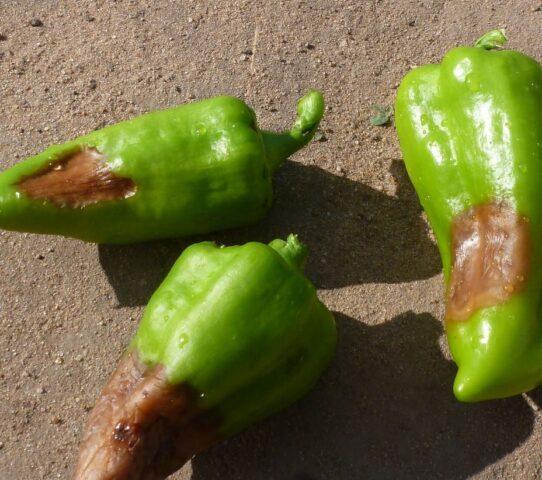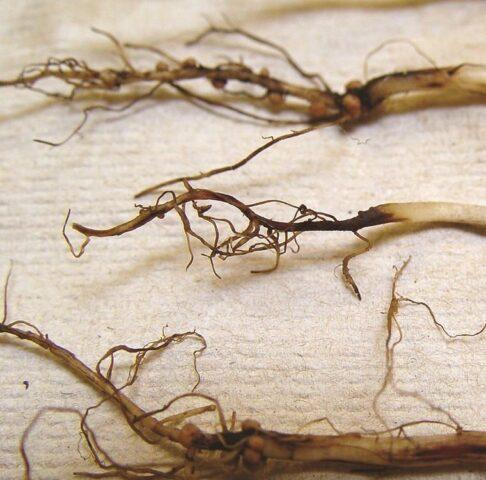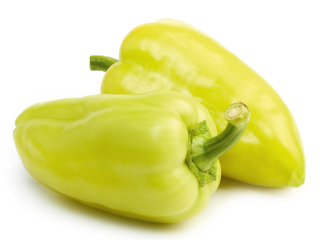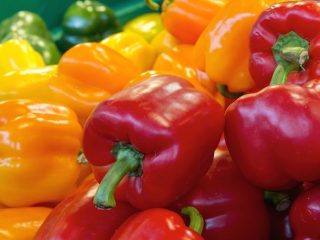Content
If a pepper rots on a bush in a greenhouse, it can be associated with a variety of diseases. Moreover, the reasons for them are the same - excessive watering, too dense planting, insufficient ventilation of the room. If signs of rot appear, it is necessary to remove all affected parts and immediately treat the plants with drugs or folk remedies. In extreme cases, all that remains is to dig up and throw away the bush to prevent the spread of infection.
Why do peppers rot on a bush in a greenhouse?
Sweet peppers rot in the greenhouse due to bacterial or fungal diseases. They are activated in conditions of high humidity and fairly high temperature. For example, if it is relatively warm outside, the space in the greenhouse will heat up to a higher temperature. And since it is closed, the humidity level is always higher here. And if you give too much water, it will inevitably lead to rotting.
It is not possible to completely insure yourself against these phenomena.However, pepper most often rots on the vine in a greenhouse for the following reasons:
- Pathogenic fungi actively develop in damp conditions, so the main factor is regular excessive soil moisture.
- An increased level of air humidity also persists in cases where the greenhouse is rarely ventilated (especially on hot days).
- If you get it on the leaves or stems when watering, this can also lead to the development of pepper rot.
- An indirect factor is the absence or rare loosening of the soil.
- Too dense planting leads to increased humidity in the ground layer and provokes the development of pepper rot.
- Improper care - lack of fertilizing, lack of preventive treatments with fungicides or folk remedies.
What is pepper rot like?
Bell peppers rot due to the development of various diseases:
- gray rot;
- stem;
- white (sclerotinia);
- apical;
- soft bacterial;
- blackleg;
- late blight;
- Alternaria blight;
- white spotting;
- spotted wilt.
At the same time, outwardly they appear with approximately the same signs - the tissues are covered with brown spots of different shapes. Then a grayish coating appears on them. Due to rot, the fruits and the bushes themselves die very quickly. There are also individual symptoms characteristic of a specific type of pathology. They are often quite similar to each other. Therefore, just in case, it is necessary to treat with different preparations - mainly fungicides.

Rot is associated with various diseases
What to do if the pepper rots
If pepper fruits rot on the bushes, all affected parts (including leaves and stems) must be removed. They should be taken as far as possible and thrown away, or better yet, burned. Immediately after this, treatment with special preparations is carried out.To determine what tools will be needed, it is necessary to diagnose the cause of the rot by external signs.
Stem rot
Despite its name, the pathology affects not only the stems, but also the leaves. First, they are covered with a white coating, then brown spots of irregular shape appear. Over time, they increase, occupying an increasingly larger area. At the same time, the spots on the leaves of the pepper are small, but on the stems they are quite large.

Stem rot occurs due to improper care and thickened plantings
Therefore, it is necessary to adjust the amount of watering and remove weeds from the area.
Apical rot
When peppers rot in the garden due to blossom end rot, the disease manifests itself externally with the following symptoms:
- rotting of the side walls (the top itself remains healthy);
- the appearance of dark green spots on the surface of the fruit, 5 mm in diameter;
- individual parts of the peppers become soft and saturated with moisture;
- over time, these parts unite and stretch along the fruit (up to 8 cm);
- the skin dries out and becomes brown or even black;
- the surface wrinkles and “sinks” deeper;
- taste qualities are sharply reduced.
Blossom rot has two forms:
- Non-infectious – not associated with the activity of fungi, bacteria or other pathogenic microorganisms. The disease is not contagious, but that makes it no less dangerous.
- Infectious – develops due to pathogenic bacteria (infection through seed).
In the first case, the following drugs are used for treatment:
- calcium fertilizers (for the roots and leaves, but not for the fruits);
- watering with Kalbit S;
- watering with infusion of wood ash (200 g per 10 l);
- foliar treatment with whey, kefir or milk of any fat content (do not dilute).
The bacterial form of blossom end rot is treated with the following drugs:
- "Bordeaux mixture";
- "HOM";
- "Abiga Peak";
- "Fitosporin".
Blackleg
Blackleg also leads to rot, but it is not fungal, but bacterial in nature. This is a dangerous disease that can even appear on seedlings and completely destroy fragile seedlings. External signs of pathology are:
- the stem becomes covered with dark, even black spots;
- the legs of the pepper become thinner and lose their elasticity;
- the shoots wither, weaken and lie down on the ground.

Seedlings affected by blackleg
First, young shoots are affected, then stronger branches. Such seedlings can produce a harvest, but it will be much smaller, and the taste will deteriorate.
For treatment, several treatments are carried out with the following drugs:
- "Baktofit";
- "Planriz";
- "Fitoflavin-300";
- "TMTD" (an organic compound called tetramethylthiuram disulfide).
To prevent the seedlings from becoming rotten, the soil is disinfected in advance by watering it with a 1% solution of potassium permanganate or keeping it in the freezer for several days. Also, during cultivation, carefully monitor hydration, without giving too much water.
Sclerotinia
Peppers can also suffer from a fungal infection such as white rot (sclerotinia).

The disease progresses in conditions of high humidity and low temperature (about 15 degrees)
The main signs of sclerotinia:
- thickenings appear inside the stems - sclerotia;
- from them fungi develop that infect all plants;
- the bush stops growing and dies.
To treat white rot of peppers, the following remedies are used:
- "Kaptan";
- "Bordeaux mixture";
- "Ciprodinil";
- "Zineb."
White spot
If the pepper rots in a greenhouse due to white spotting (also called septoria), the external symptoms will be as follows:
- the lower leaves become covered with white spots;
- over time, they unite and occupy the entire surface of the leaf plate;
- Numerous dots appear on both sides of the sheet;
- then the fungus infects the upper leaves.
To treat this fungal disease that leads to pepper rot, powerful fungicides are used:
- "Switch";
- "Ridomil Gold";
- "Topaz";
- "HOM" and others.

"Topaz" is one of the best fungicides used to treat many fungal diseases
Alternaria blight
Another dangerous fungal disease that leads to pepper rot. Accompanied by the following symptoms:
- angular spots form on the leaves, bounded by veins of a dark shade;
- the same spots appear on pepper fruits over time;
- At first they are watery, then they darken, and eventually become covered with mold.
To treat this type of pepper rot, the following drugs are used:
- "Maksim";
- "Profit";
- "Abiga Peak";
- "Tattu."
Spotted wilt
This is a viral disease, also called pepper bronzing (the causative agent is the tomato bronzing virus). The pathology is quite rare, but can also lead to rot of pepper fruits. Main features:
- the leaves acquire a bronze or dirty purple color;
- then brown spots appear on the surface of the foliage;
- the fruits become deformed and acquire a variegated color;
- the apical part of the bush dies.
There is no adequate treatment, so the bush must be immediately dug up and burned, and the soil must be shed with a weak solution of potassium permanganate.
Late blight
Peppers often rot in greenhouses made of polycarbonate and other materials due to late blight. This is a dangerous fungal infection that manifests itself with the following symptoms:
- rot of roots and root collar;
- stem rot;
- peeling of the bark;
- wilting of the bush;
- dark spots on the surface of the stem;
- death of the apical part of the bush.
The main way to prevent pepper rot due to late blight is treatment with fungicides:
- "Bordeaux mixture";
- "Fundazol";
- "Abiga Peak";
- "Respetka 25%".
Gray rot
This is a fungal disease accompanied by the following symptoms:
- watery spots on the entire aerial part;
- the tissues turn brown, the spots take on an irregular shape;
- then the tissues dry out and the stains become dark gray;
- the shoots dry out, which leads to the death of the entire bush;
- Due to gray rot, pepper fruits become covered with dark green spots.
Various chemicals are used for treatment:
- "Topaz";
- "Horus";
- "Falcon";
- "Strobe" and others.

Fruit affected by gray rot must be destroyed
Soft bacterial rot
The main symptom of this disease is brown spots on the surface of the fruit, which quickly soften and lead to tissue death.

Pathogenic microorganisms are activated due to high humidity, sunburn and sudden temperature changes.
For treatment, bacterial fungicides are used:
- "Fitosporin";
- "Alirin B";
- "Gamair" and others.
Traditional methods of treating pepper fruit rot
Along with chemicals, there are also folk remedies for treating pepper rot in a greenhouse. They are used in the following cases:
- for treatment in the early stages, when a small area is affected and the bush can still be saved;
- after transplanting seedlings for prevention;
- shortly before harvest, when the use of chemicals is potentially hazardous to health.
Among the most common folk remedies against various types of pepper rot are the following:
- Milk (1 l) is mixed with 9 l of water (a total of 10 l is obtained - a standard bucket). Spraying is carried out weekly, usually 2-3 procedures are enough.
- Take chalk and grind it to a powder. Measure out 2 tablespoons, add to 1 liter of water (must be above room temperature) and stir thoroughly. The bushes are not sprayed with this mixture, but watered at the roots several times a week.
- You can also pour a strong infusion of wood ash (preferably birch ash) over rotten peppers - 300-400 g per 10 liters. First, the raw material is dissolved in a small volume of hot water, allowed to brew for several hours, and then brought to 10 liters.
- Take ordinary pharmaceutical iodine (alcohol solution) and add 10 drops per 10 liters of water, dissolve thoroughly and spray at least once a week. The total number of treatments is 2-3. For greater effectiveness, you can add 2 tablespoons of laundry soap shavings or 1 liter of milk of any fat content to the solution.
- Take 5 liters of hot, but not boiling water and dilute 50 g of dry mustard powder. Mix thoroughly and leave for two days, then bring to a total volume of 10 liters. Peppers are sprayed weekly against rot, the total number of procedures is 2-3.

If a disease is detected, the plantings are treated at least once a week.
Prevention of rotting of pepper on the bush
Preventing the development of different types of pepper rot is always easier than dealing with the consequences of the disease. Prevention measures are not very complicated, but quite effective, especially if you follow them constantly:
- The most important condition is not to overuse watering. Even demanding varieties of peppers can easily survive 3-5 days of complete drought. But if you regularly give a lot of water, this will certainly provoke the development of the disease.
- If possible, it is better to organize drip irrigation - in this case, water is supplied evenly, and its volume can be easily adjusted for each plant.
- After watering, the soil must be loosened, and this should be done carefully so as not to damage the root system.
- Ventilate the greenhouse regularly, especially after watering and in hot weather. If the night is warm, there is no need to close it at all - air should flow freely.
- Plant pepper seedlings in compliance with the minimum interval: for low-growing varieties from 40 cm (with at least 50 cm between the rows), and for tall varieties - at least 50 cm (row spacing is at least 70 cm).
- In the fall, after harvesting in the greenhouse, liming the soil using dolomite flour or slaked lime (in both cases, 200 g per 1 m2). You can also add 150-200 g of wood ash to the same area.
Conclusion
When a pepper rots on a bush in a greenhouse, you need to act immediately. First, the affected parts are removed and then treated. You should stop watering for several days and leave the greenhouse ventilated around the clock. In the early stages, the development of rot can be stopped. If the bush is severely affected, it will have to be thrown away.












